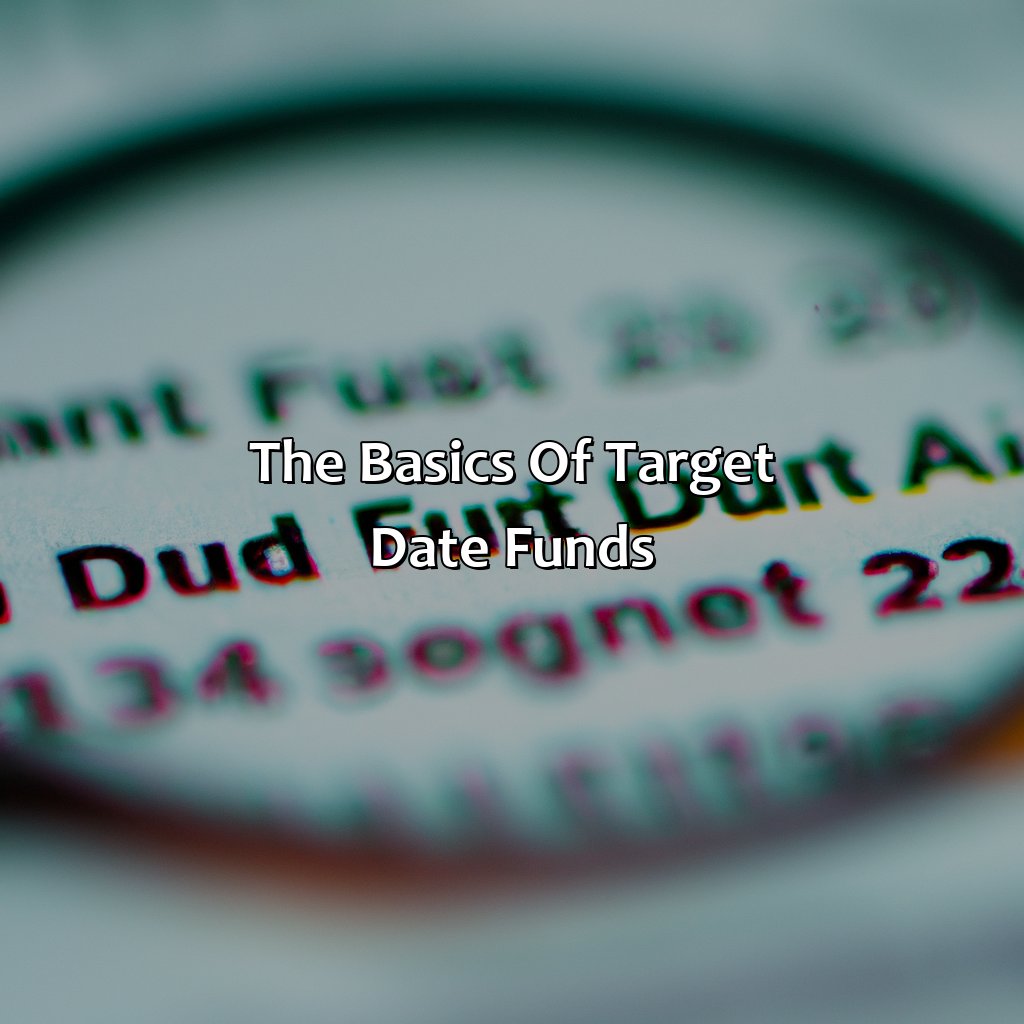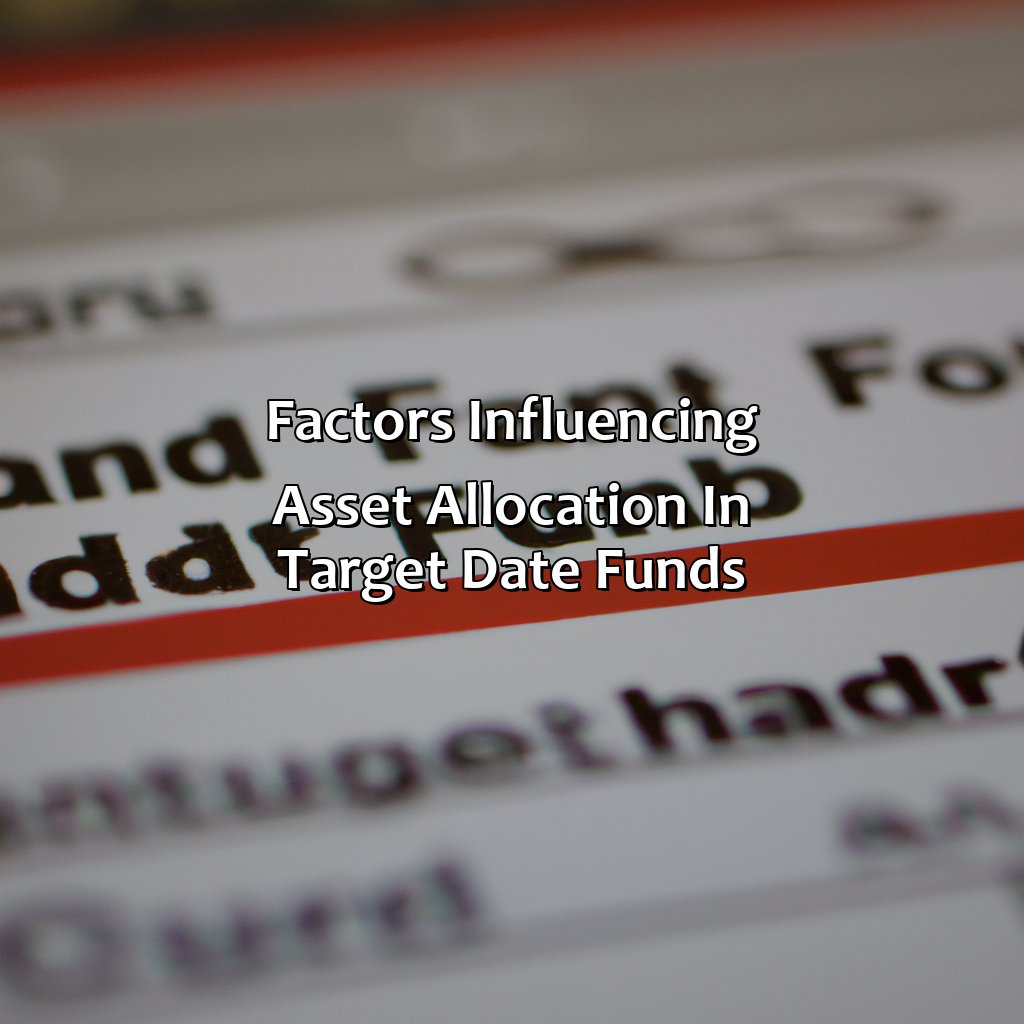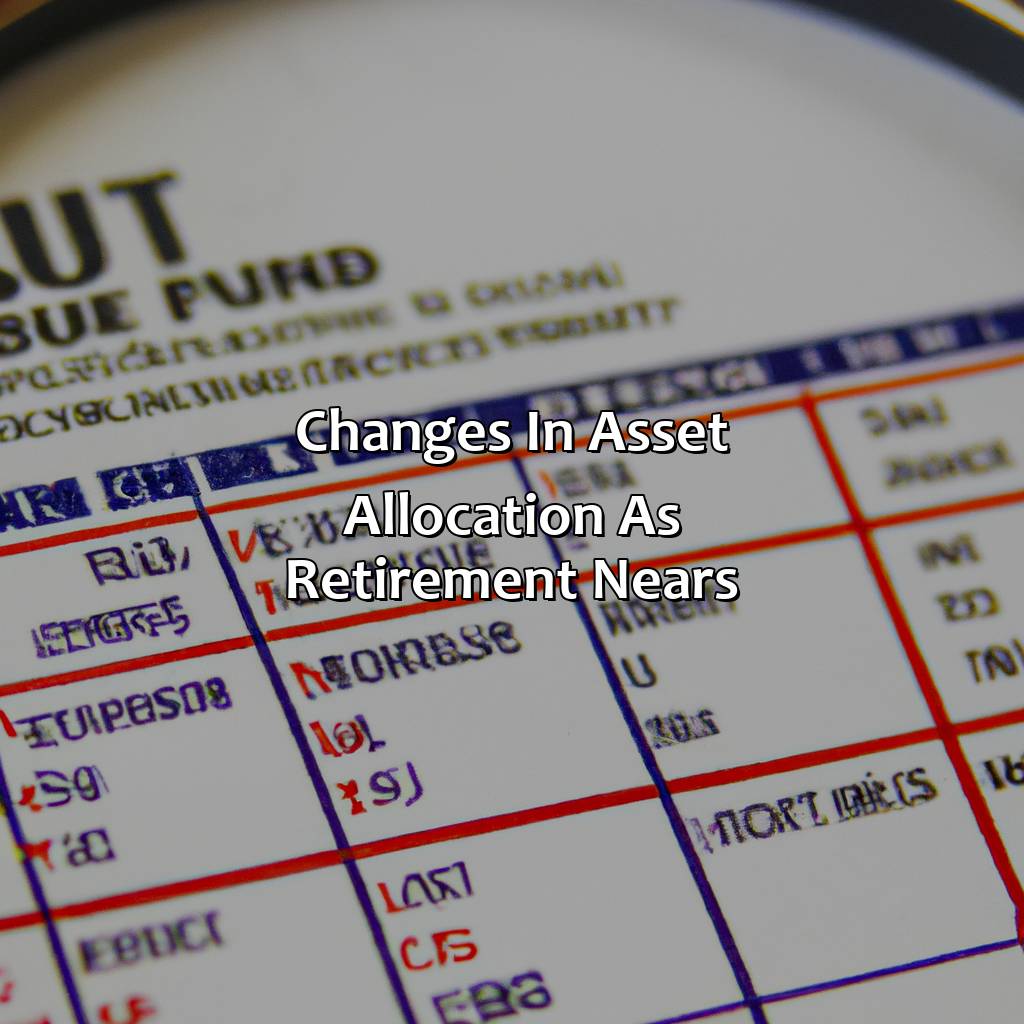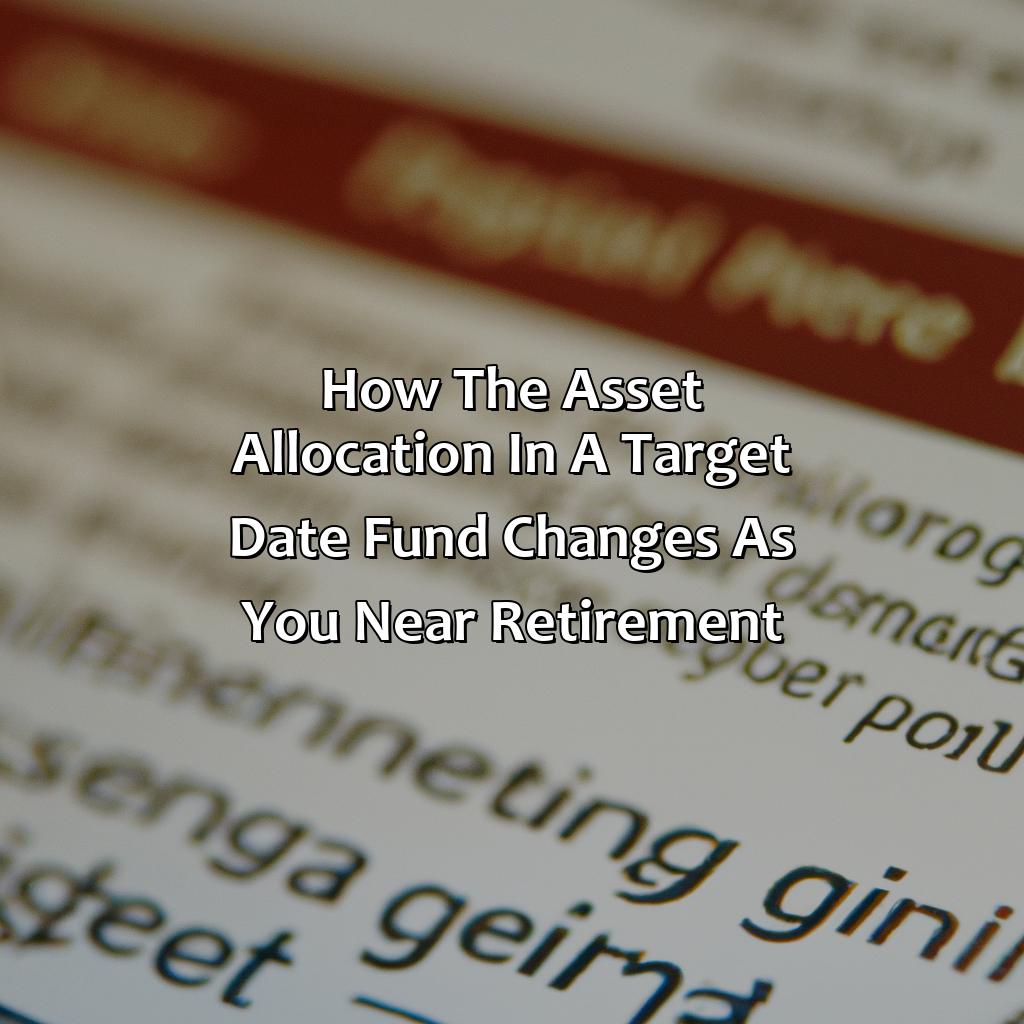How The Asset Allocation In A Target Date Fund Changes As You Near Retirement?
Key Takeaway:
- The asset allocation in a target date fund changes as retirement nears: As retirement approaches, target date funds shift towards fixed income investments, reducing exposure to equities and prioritizing capital preservation. This shift is influenced by factors such as time horizon, risk tolerance, market conditions, and fund provider philosophy.
- Time horizon influences asset allocation in target date funds: The longer the time horizon, the higher the exposure to equities in the fund. As the time horizon shortens, the fund shifts towards fixed income investments, which are less volatile and provide more stable returns.
- Risk tolerance and market conditions also influence asset allocation in target date funds: In times of market volatility, target date funds may adjust asset allocation to mitigate risk and preserve capital. Additionally, individual investor risk tolerance can play a role in determining asset allocation.
Do you worry about how to invest your retirement savings to generate enough income? Find out how to manage risk with asset allocation in Target Date Funds as you near retirement. You can confidently plan for retirement without compromising returns.
The Basics of Target Date Funds
Target date funds are investment portfolios that allocate their assets according to the investor’s expected retirement date. The fund automatically rebalances over time, shifting towards a more conservative investment strategy as the target date approaches. The allocation changes based on a predetermined glide path that factors in the investor’s risk tolerance and expected retirement expenses. As the target date gets closer, the fund will gradually reduce exposure to higher-risk securities such as stocks and shift towards fixed-income investments like bonds.
Investors who choose target date funds do not have to worry about managing their investments actively. These funds provide a low-cost, liquid, and diversified option for retirement, making them popular with individual investors and employers offering 401(k) plans.
It is essential to note that target date funds vary in their risk management strategies. The allocation shift timeline may vary depending on the fund’s glide path, which determines the rate of change in asset allocation. Moreover, different funds have different investment profiles based on their chosen sets of benchmark indices, asset classes, and strategies. It is crucial to align portfolio choices based on an investor’s goals, time horizon, and risk tolerance.
A real-life example of successful target date funds is the T. Rowe Price Retirement series, which has been successful in managing investors’ long-term wealth by managing asset allocation and preserving principal. The asset allocation changes in these funds depended on the investor’s expected retirement date, and the glide path appropriately balanced growth, preservation, and risk management.
Overall, target date funds are an excellent choice for those who seek a simplified investment strategy for their retirement years. However, it is essential to understand that not all target date funds are built equal, and it is essential to align choices with your financial goals for effective wealth management.

Image credits: retiregenz.com by David Washington
Factors Influencing Asset Allocation in Target Date Funds
Target Date Funds (TDFs) are influenced by various factors that dictate the asset allocation throughout the fund’s lifecycle. These factors dictate the risk-averse asset allocation for the investor based on the investor’s time of retirement, current age, desired risk profile, and market stability.
The asset allocation of TDFs is influenced by market conditions, the projected retirement age of the investor, and the expected income the investor wishes to earn after retirement. Factors like stock market fluctuations, market volatility, and economic outlook affect the asset allocation of TDFs.
The asset allocation of TDFs changes as the investor nears retirement— the fund’s fixed income allocation increases, and equity allocation decreases to ensure low-risk investments.
The TDFs allocation varies following the glide path designed for the specific fund. A particular Glide Path varies in implementation from provider to provider, affording due diligence for fund selection.
According to Morningstar research, TDFs with less than a 25-year time horizon usually involve a conservative portfolio with a greater fixed income allocation. In contrast, funds with a more extended time horizon are more aggressive with a higher proportion of equity.
According to Vanguard’s Recommended glide path strategies for TDFs, their slide path helps bond allocations catch up to stock allocations within ten years of Retirement.

Image credits: retiregenz.com by Adam Washington
Changes in Asset Allocation as Retirement Nears
As one approaches retirement, the asset allocation in a target date fund shifts to a more conservative mix of investments. This is done to reduce the risk of sudden market downturns. As investors age, their risk tolerance typically decreases, so the fund reduces the amount of stocks in the portfolio and increases the amount of bonds and cash.
The shift in asset allocation happens gradually over time, with the fund manager rebalancing the portfolio annually to maintain the appropriate mix. The goal is to provide a smoother path to retirement with less volatility and a greater focus on preserving capital.
It’s important to note that target date funds differ in their investment strategies and allocation mix. Investors should review the fund’s prospectus and understand its underlying investments before investing.
In a real-life example, during the 2008 financial crisis, many individuals approaching retirement saw significant drops in their retirement accounts. Those invested heavily in stocks saw the largest losses, while those in more conservative investments weathered the storm better. This event highlighted the importance of a well-diversified portfolio and appropriate asset allocation, especially as one nears retirement.

Image credits: retiregenz.com by Harry Washington
Five Facts About How Asset Allocation Changes in Target Date Funds Near Retirement:
- ✅ Target date funds shift their asset allocation from stocks to bonds as the target date approaches. (Source: Vanguard)
- ✅ This shift in allocation is known as the “glide path” and is designed to reduce risk as retirement nears. (Source: Fidelity)
- ✅ Target date funds typically have a higher allocation to stocks early in the fund’s life to capture growth potential, then gradually shift to bonds for capital preservation. (Source: Schwab)
- ✅ The glide path and asset allocation in target date funds can vary between different fund managers and their respective target dates. (Source: Morningstar)
- ✅ Target date funds can be a convenient option for retirement planning as they offer a diversified portfolio with automatic rebalancing and asset allocation adjustments over time. (Source: Forbes)
FAQs about How The Asset Allocation In A Target Date Fund Changes As You Near Retirement?
How does the asset allocation in a target date fund change as you near retirement?
Target date funds are designed to automatically adjust the investor’s asset allocation as they approach retirement. This is done by decreasing the percentage of equities and increasing the percentage of fixed-income investments.
What is the typical asset allocation of a target date fund when retirement is still 30 years away?
When retirement is a distant 30 years away, the target date fund’s asset allocation is typically heavily weighted towards equities, with a small percentage of fixed-income investments. This allocation is designed to maximize returns and take advantage of the long-term growth potential of the stock market.
How does the asset allocation in a target date fund change as retirement approaches?
As the target date fund approaches the retirement date, the asset allocation becomes more conservative, with a greater emphasis on fixed-income investments and a smaller percentage of equities. This shift is designed to minimize risk and preserve capital as the investor’s retirement date draws closer.
What happens to the asset allocation of a target date fund after retirement?
After retirement, the asset allocation of the target date fund continues to become more conservative, with an even greater emphasis on fixed-income investments and a smaller percentage of equities. This shift is designed to provide a steady stream of income and minimize the risk of loss.
Can the asset allocation of a target date fund be customized?
Most target date funds offer a standard asset allocation that automatically adjusts as the investor approaches retirement. However, some funds do offer the ability to customize the asset allocation to better suit the individual’s specific needs and risk tolerance.
What factors influence the asset allocation of a target date fund?
The asset allocation of a target date fund is influenced by a variety of factors, including the investor’s age, retirement goals, risk tolerance, and market conditions. These factors are taken into account when the fund is first created and are continually evaluated and adjusted as needed to ensure the best possible outcomes for investors.





